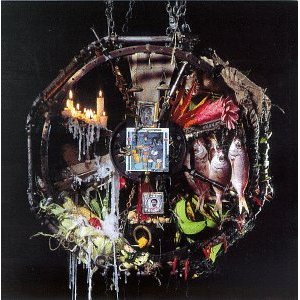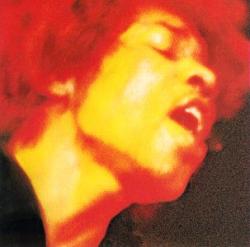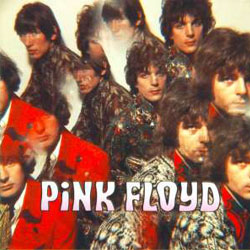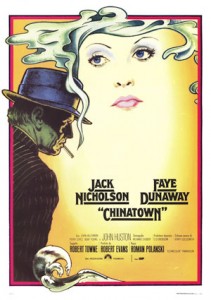The Congos – Heart of the Congos (1977)
Great art knows no seasons. Nevertheless, some music is made for—or at least can be fully appreciated during—specific times of the year. Reggae, which many people still believe means Bob Marley’s music, tends to get broken out only once the flip flops and hibachi grills come out of hibernation. For an alternative that’s both inspiring and educational, the first reggae disc you should turn to as soon as the weather warms is Heart of the Congos. Shepherded into existence by the incomparable Lee “Scratch” Perry at the height of his uncanny powers, this album functions as a timeline of history invoking “songs and psalms and voices” to create a soulful, occasionally unsettling tapestry of deep cultural roots. On many tracks, Perry’s production sounds like a remix already, maximizing a slightly disorienting tension between the push of straight ahead riddim and the pull of echoing voices: Gregorian chants funneled through the heart of darkness into the light. It’s unlike anything you’ve ever heard, yet it’s somehow, impossibly, familiar.
Jimi Hendrix – Electric Ladyland (1968)
Electric Ladyland is not merely one of the ultimate summer albums, it is summer. From the hot-town-summer-in-the-city chaos of “Crosstown Traffic” to the midnight lightning of “Voodoo Chile” and the sexual swagger of “Gypsy Eyes” to the sweat-soaked croon of “Long Hot Summer Night” (!), this double-disc oozes with bright lights (“House Burning Down”) and warm remorse (“Burning of the Midnight Lamp”). Even the Apocalyptic imagery, properly psychedelicized in “All Along the Watchtower” (the only time Bob Dylan had his own work improved upon) mutates from cryptic folktale to field report from the steamy jungles of Vietnam and/or the sweltering streets with police staring down protestors. And then there’s the extended suite that occupies all of Side Three: it starts with a saxophone and a smile (“lay back and dream on a rainy day”) and then slips underwater, literally: our feet find the sand and the sea is straight ahead. By the time the moon turns the tides (gently, gently away) you have most definitely been experienced: it’s a hot, sweet and soulful adventure. Electric Ladyland is a trek through sights and sounds that only one man could convey, and he seems like he’s eager to shed his skin and get to a place where his body will not constrain him.
Pink Floyd – The Piper at the Gates of Dawn (1967)
It’s not so much that Floyd’s debut helped define the Summer of Love (though it did), or that there is necessarily anything one can associate with hot weather in those sounds. It’s more than that: from the echoed cadence of roll-called planets to those last surreal goose honks, Syd Barrett’s guided tour through the miniature landscapes and dreamscapes he was imagining does transport you to other places, but also another time: youth. Everything about the execution, and realization, of this spectacular album exudes the uncorrupted innocence of a novel conception. More inspiration than insanity, Barrett’s acid-inspired reveries unlocked the obvious genius teeming inside his head. The Piper at the Gates of Dawn is an enduring and ever-relevant document of unbridled and ecstatic creativity realizing its initial and immediate fulfillment, a full-flowering burst that would not (could not?) be duplicated. Listening to it, especially during months that might remind you of a (sigh) more innocent time, it’s not unlike a trip to the beach for your mind.
The Who – Quadrophenia (1973)
“The beach is a place where a man can feel he’s the only soul in the world that’s real…” The Who’s masterwork Quadrophenia could almost be described as “accidental beach music”. Most of the narrative details the mercurial urgencies of young Jimmy, the disenchanted Mod. As such, the words and sounds and feelings are alternately frantic and claustrophobic—the story of a sensitive, chemically altered teenager uncomfortable inside his skin. There is only one release for him: the beach. The album opens with crashing waves and ends with electrified air of a summer storm; in between there are seagull chirps, scooters careening out of the city into open spaces, and bass drum thunder and cymbal-splash raindrops. The album, like the protagonist’s mind, wrestles with itself and rises and falls like the moods of adolescence, until the fever breaks, the skies open and the air is dark, cool and clear.
Chinatown (Roman Polanski, 1974)
A confident, if impetuous detective sits patiently at the top of a sloping cliff, overlooking the Los Angeles coastline as the day’s light drops into evening. He waits, lighting cigarette after cigarette, totally unaware that he has already stumbled into a hornet’s nest of corruption. The beauty of what he sees (and we see) perfectly conceals the brutal ugliness of what is really going on: unwittingly, Jack Gittes (Jack Nicholson) is about to lift up a rock and behold the guts and machinery of what gets sold as the American Dream. It is hot and dry; indeed, the backdrop of the story is a severe drought that is wreaking havoc on local farmers. Over the course of a few scorching days, cars overheat, people drown in dry riverbeds, and a great deal of blood, sweat and tears indelibly compensate for the rain that won’t fall and the relief that never comes.
Elements of several of these essays are featured in Murphy’s Law, Vol. One –available now.





